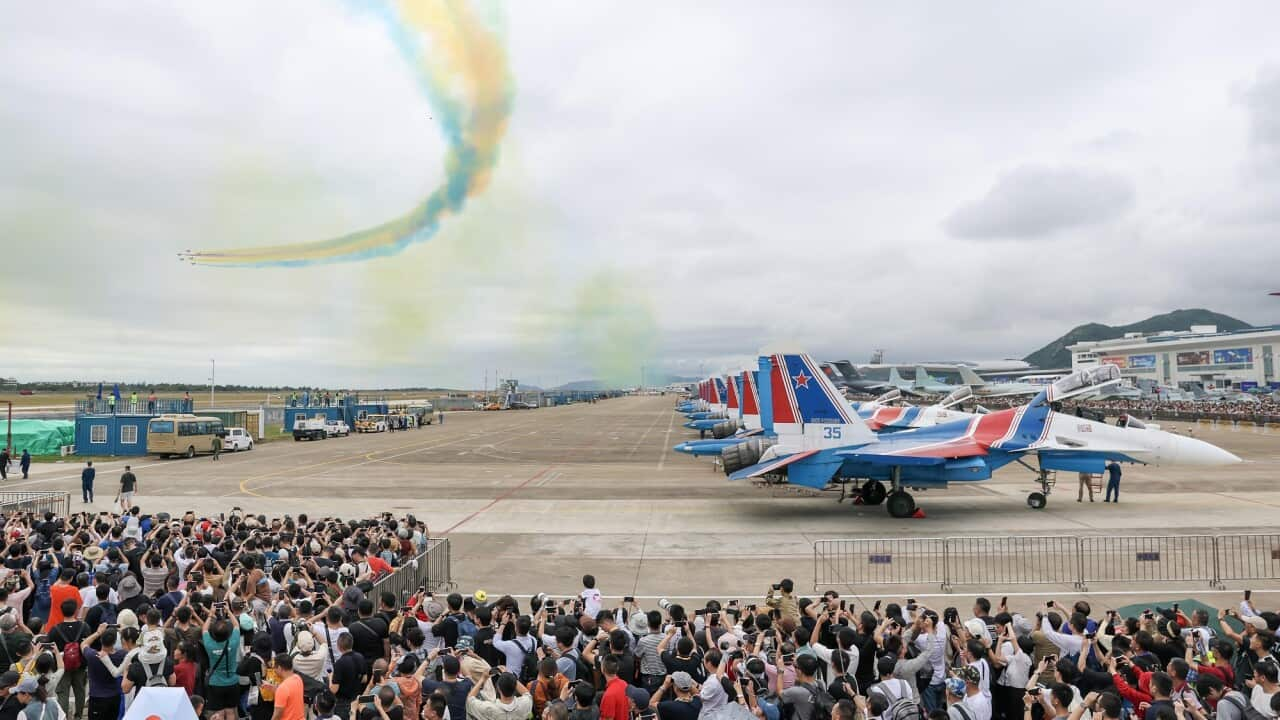TRANSCRIPT
(Sound of planes flying overhead)
Low-flying aircraft execute elaborate manoeuvres and formations in the sky, dazzling visitors at the Airshow China event in the southern city of Zhuhai.
But this year, organisers are hoping to offer something a little different: low-altitude flights.
Aviation activities in this category are conducted in airspace below 1,000 metres.
China is aiming to be the first country in the world to develop what it calls the low-altitude economy, which could include passenger and cargo transport - as well as rapid-response emergency services.
It could also include the possibility of pilot-free flights.
Companies in countries like Australia and the UK are also developing the technology for flying taxis and the low-altitude sector but there remain barriers, including the regulatory environment.
More than 1,000 companies from 47 countries and regions participated in the six-day Airshow China event.
They say they see huge market potential - and as a result, they are racing to bring their products to full commercialisation - as early as the next few years.
Brand manager of XPHENG AEROHT, an affiliate of Chinese electric vehicle manufacturer XPeng, Zhou Yuqing explains.
"In the initial stage, we are thinking of scenarios such as flying the aircraft outdoors, or in campsites. If going to a beautiful place, we can drive the car there and release the aircraft, after that we can fly it. Gradually, when the market acceptance becomes higher and policies and regulations more advanced, and everyone can better accept this, it's likely there will be more scenarios for application."
The show's creativity knows no bounds - even showcasing an ordinary car with an aircraft onboard.
It's called a Land Aircraft Carrier which consists of two parts - a six-wheel vehicle as the ground 'mothership' and an electric vertical take-off and landing aircraft as the air module.
The company says all you need is five minutes for the 720-kilogram aircraft to be released, or stored back, to the truck of the vehicle.
The aircraft is easy to operate too, supporting both manual mode and autopilot, with an intelligent flight control system governing flight status.
Zerog Aircraft Industry marketing director Hu Haisong says there's so much untapped potential.
"As a transport ecology, low altitude is a rare space that has not been fully utilised but with huge potential. Ground transport is already very crowded, and high altitude is the civil aviation category. And airspace of low altitude, between 100 metres and 1,000 metres, sometimes up to 3,000 metres, has not been fully developed. Its commercial value is immense."
Similarly, Aerofugia Technology brings to display an electric vertical take-off and landing aircraft called AE200, designed to be used for city commutes, tourism and emergency rescues.
It can carry one pilot and five passengers, and travel 200 kilometres once fully charged.
Their senior product manager Hou Yi explains.
"It has low requirements for take-off and landing, because it can take off and land in any suitable place. For example, it can carry out vertical take-off and landing on a rooftop and in an open space on the ground."
The Chinese government is providing financial and policy support to boost the low-altitude aviation industry and create the regulation needed to support the sector.
A government report called for the cultivation of emerging and future industries and building industries including the low-altitude economy into new "engines for growth."
As of 2023, the size of China's low-altitude economy exceeded 500 billion yuan and authorities are pushing for the market to reach trillion-yuan level by 2030, according to state media reports.
However, challenges remain around establishing industry standards, corresponding regulations and supporting infrastructures.
Zhou Xiaoyue, director of public relations of United Aircraft Group, explains.
"Infrastructure needs to be further improved to build scenarios for various types of aircrafts. Meanwhile, airspace needs to be further opened. In the future, further areas of application should be opened."
Visitors at the air show say they're excited about a future with these low-altitude aircrafts entering into real life.
But for some, like Yu Zepeng the question is around the price tag.
"But in terms of cost, how can we make it acceptable for more ordinary people? Because it may take up to 10,000 yuan for a single drive. It will be acceptable for everyone, if the cost was cheaper and safety and levels of comfort are guaranteed."













